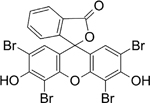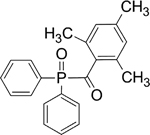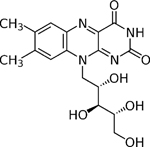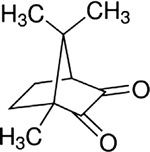Table 4.
Commonly used photoinitiators and their properties.
| Photoinitiator | Chemical structure | Property |
|---|---|---|
|
| ||
| Irgacure 2959 |

|
Highly effective, low odor, low volatility and can be used in waterborne photocuring system |
| Eosin Y |

|
Slightly yellowish, soluble in water and sparingly soluble in alcohol, acidic dye, repeated exposure may result in blindness and systemic poisoning |
| LAP |

|
Type 1 photoinitiator, water-soluble and showed increased cell viability. Showed increased absorbance at visible light wavelength |
| TPO |

|
Stable, incompatible with strong oxidizing agents, possess high water solubility |
| VA-086 |
|
Crystalline, pale yellow, halogen-free azo-initiator |
| Ruthenium | Ru | The water-soluble photoinitiator changes the color of the hydrogel into yellow/red/orange |
| Bisacylphosphine oxide (BAPO) |

|
Symmetric chemical structure, soluble in water but insoluble in other mono or oligomers |
| Riboflavin |

|
Vitamin B2, yellow tricyclic compound, phosphorylated during the biological process |
| Camphorquinone |

|
It gives a very faint fluorescence and induces polymerization very slowly |
| Irgacure 184 |

|
White crystalline powder with low odor and water-soluble |
